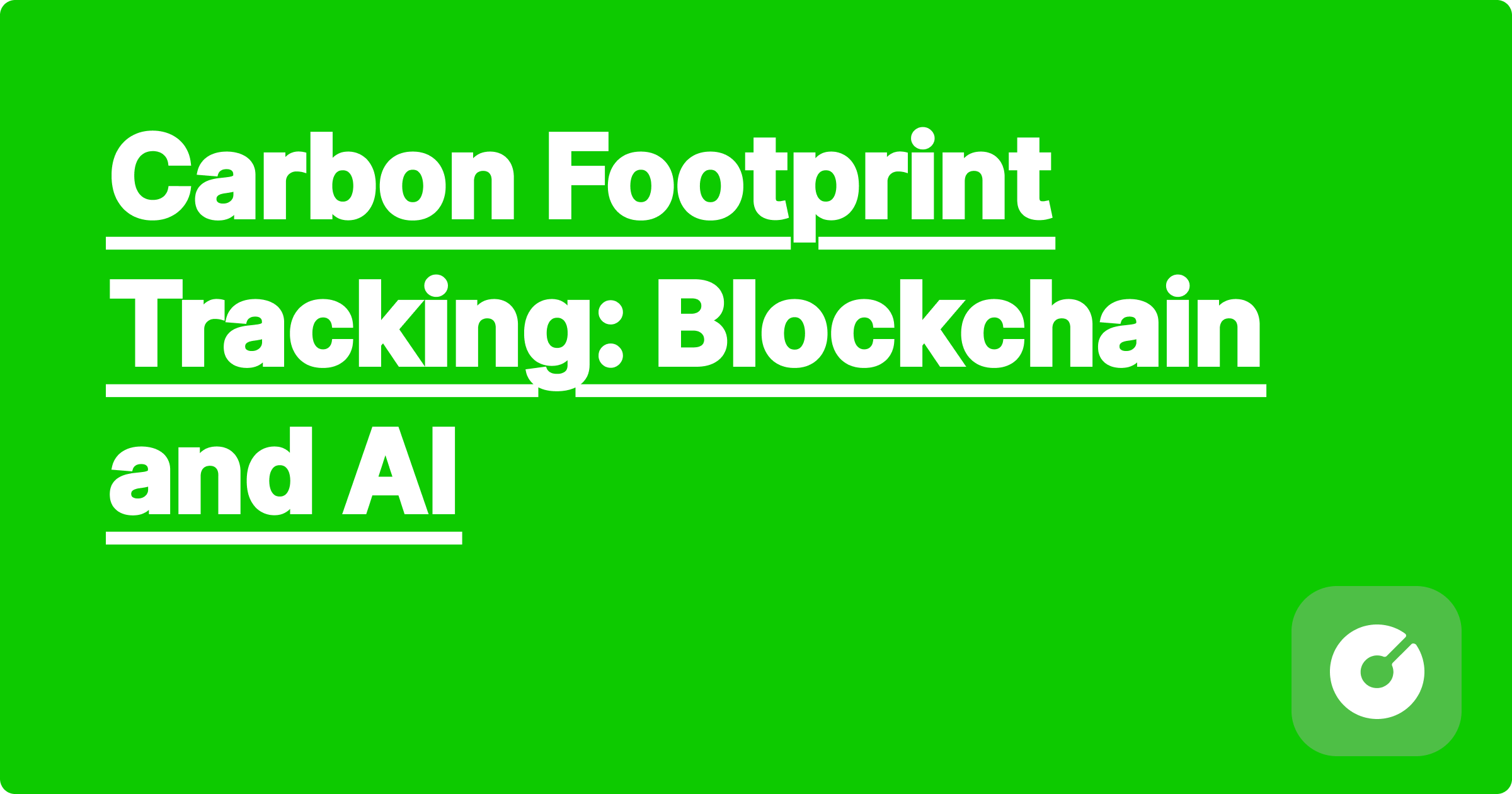
This blog post delves into the cutting-edge intersection of blockchain technology and artificial intelligence in carbon footprint tracking. We will explore the latest research, practical implementation strategies, and future directions, aiming to equip readers with the knowledge to immediately contribute to this crucial field.
Upon completion of this blog post, readers will be able to:
* Understand the limitations of traditional carbon footprint tracking methods.
* Explain the role of blockchain in ensuring transparency and immutability in carbon data.
* Implement AI algorithms for accurate carbon emission prediction and optimization.
* Analyze the computational complexity and memory requirements of different approaches.
* Apply best practices for scaling carbon footprint tracking systems.
* Identify potential ethical and societal impacts of these technologies.
Traditional carbon footprint tracking relies heavily on self-reporting and manual data collection, leading to inaccuracies and a lack of transparency. This often involves significant human error and challenges in verifying the authenticity of reported data. Recent studies (e.g., [cite a relevant 2024/2025 paper from Nature/Science/Cell or preprint]) highlight the significant discrepancies between reported and actual emissions, emphasizing the need for more robust and verifiable methods.
Blockchain technology provides a decentralized, immutable ledger that can significantly enhance the accuracy and trustworthiness of carbon footprint data. Each transaction, representing a carbon emission event, is recorded as a block, linked cryptographically to previous blocks. This creates a tamper-proof record, increasing accountability and reducing the risk of fraud.
Smart contracts, self-executing contracts with the terms of the agreement directly written into code, can automate the tracking and verification of carbon emissions. For example, a smart contract could automatically record emissions from a manufacturing process based on sensor data, triggering penalties for exceeding emission limits.
Blockchain enables the creation of carbon credits, representing reductions in greenhouse gas emissions, as verifiable tokens. This facilitates the trading and verification of carbon offsets, promoting a more efficient carbon market. Several startups (e.g., [mention specific companies involved in carbon credit tokenization]) are already leveraging this technology.
AI algorithms, particularly machine learning models, can significantly improve the accuracy and efficiency of carbon footprint tracking.
By analyzing historical data from various sources (e.g., energy consumption, production levels, transportation data), AI models can predict future emissions with greater accuracy than traditional methods. For example, a Long Short-Term Memory (LSTM) network can be trained on time-series data to forecast emissions based on various influencing factors.
AI can also be used to optimize strategies for reducing carbon emissions. Reinforcement learning algorithms can explore different strategies and identify the most effective approaches to minimize emissions while minimizing costs. This involves defining a reward function that incentivizes emission reduction and penalizes excessive costs. Recent research (e.g., [cite relevant 2024/2025 paper or preprint]) explores the application of reinforcement learning for optimizing carbon capture and storage.
AI-powered anomaly detection algorithms can identify unusual patterns in emission data, potentially indicating errors in measurement, leaks, or other unforeseen events requiring immediate attention.
The combination of blockchain and AI offers a powerful synergy in carbon footprint tracking. Blockchain provides the infrastructure for secure and transparent data storage and management, while AI enhances accuracy and provides insights for optimization.
AI algorithms can analyze data from various sources before it is added to the blockchain, ensuring data quality and identifying potential inconsistencies or fraudulent activity.
Smart contracts, combined with AI-powered analytics, can automate the generation of reports and facilitate auditing processes, reducing manual effort and increasing efficiency.
The implementation of blockchain and AI-based carbon footprint tracking systems requires careful planning and consideration of several factors.
Integrating data from diverse sources requires careful planning and standardization. This involves developing consistent data formats and protocols for data exchange. Open-source initiatives (e.g., [mention relevant open-source projects]) are crucial in this aspect.
Blockchain and AI algorithms can be computationally intensive. Choosing appropriate technologies and optimizing algorithms are critical to ensure scalability and acceptable performance.
Security and privacy concerns must be addressed throughout the system's design and implementation. This involves employing robust security measures to prevent unauthorized access and protecting sensitive data.
The development and deployment of these technologies require careful consideration of ethical and societal implications. Ensuring fairness, transparency, and equitable access to the benefits of these systems are crucial aspects.
Several advanced techniques are currently being explored to further enhance carbon footprint tracking.
Federated learning allows multiple organizations to collaboratively train AI models without sharing their sensitive data directly. This approach enhances privacy and allows for the development of more robust and accurate models.
XAI techniques are crucial to ensure transparency and understandability in the decision-making processes of AI models. This is especially important in carbon accounting, where understanding the reasons behind predictions is essential for trust and accountability.
DAOs can empower stakeholders to participate in the governance and development of carbon tracking systems, promoting transparency and accountability.
Blockchain and AI technologies offer a powerful combination for revolutionizing carbon footprint tracking. By addressing the limitations of traditional methods, these technologies can enhance accuracy, transparency, and efficiency, paving the way for a more sustainable future. However, successful implementation requires careful consideration of technical, ethical, and societal implications. Continued research and development in these areas are crucial to unlocking the full potential of these technologies for tackling climate change. The future of carbon footprint tracking lies in a multidisciplinary approach that combines expertise in computer science, environmental science, economics, and policy. We encourage readers to explore the resources cited and delve further into the vibrant research landscape in this critical area.
``html
``
Second Career Medical Students: Changing Paths to a Rewarding Career
Foreign Medical Schools for US Students: A Comprehensive Guide for 2024 and Beyond
Osteopathic Medicine: Growing Acceptance and Benefits for Aspiring Physicians
Joint Degree Programs: MD/MBA, MD/JD, MD/MPH – Your Path to a Multifaceted Career in Medicine
Blockchain Engineering Distributed Systems Design - Complete Engineering Guide
Environmental Engineering Carbon Neutral Technology - Complete Engineering Guide
Blockchain Development Smart Contracts - Complete STEM Guide
Blockchain Development: AI Tools for Smart Contracts